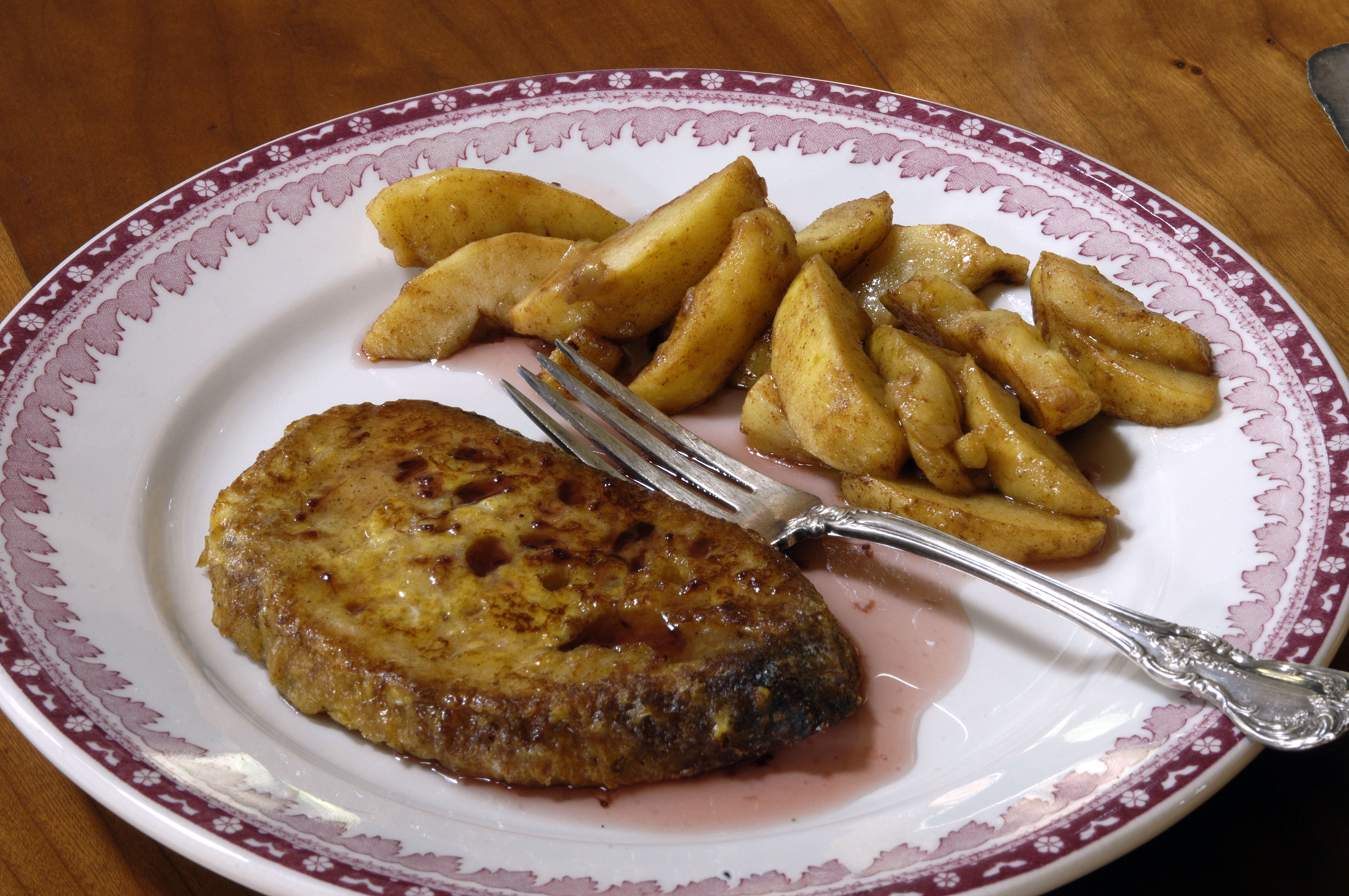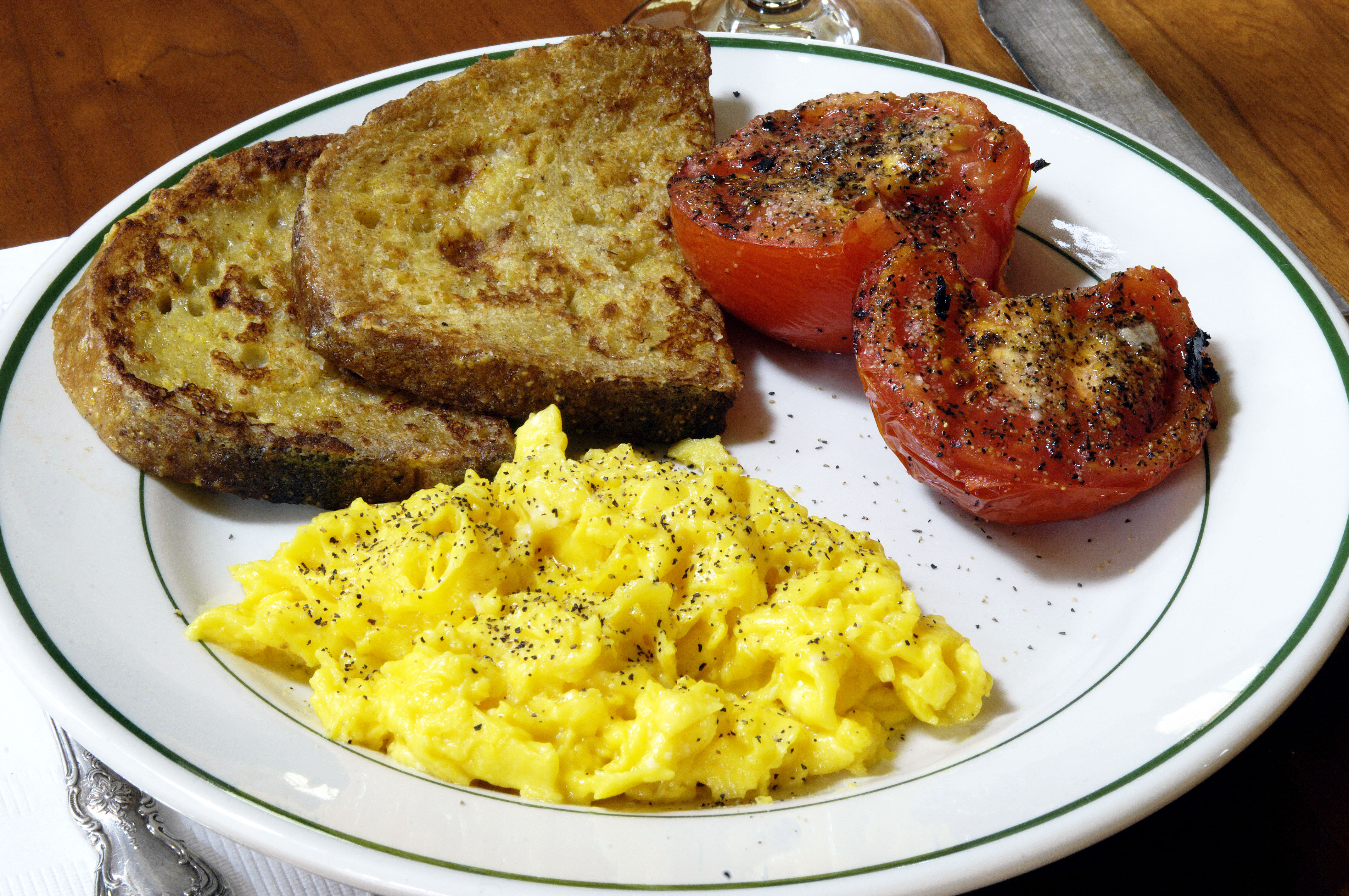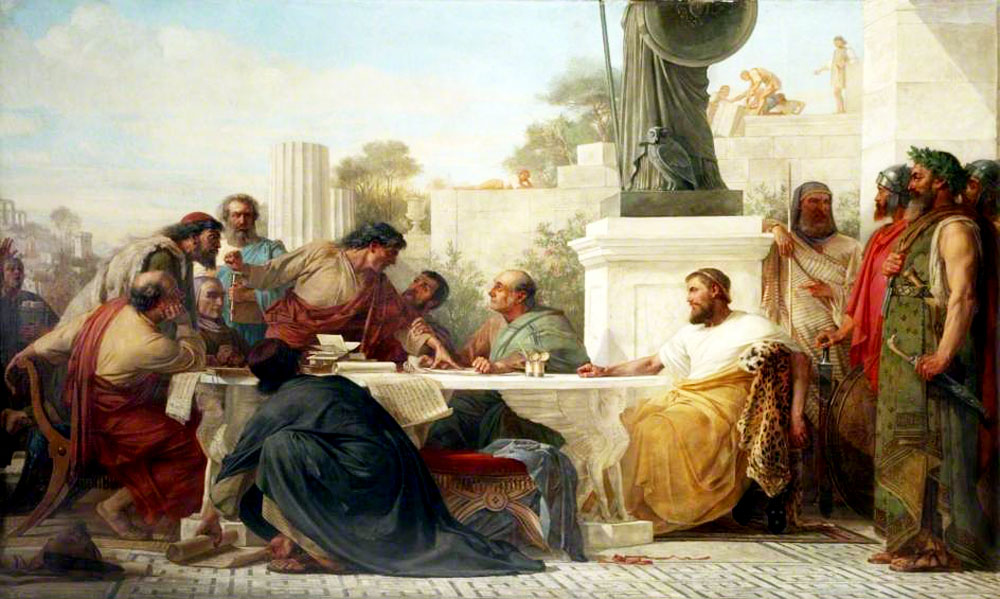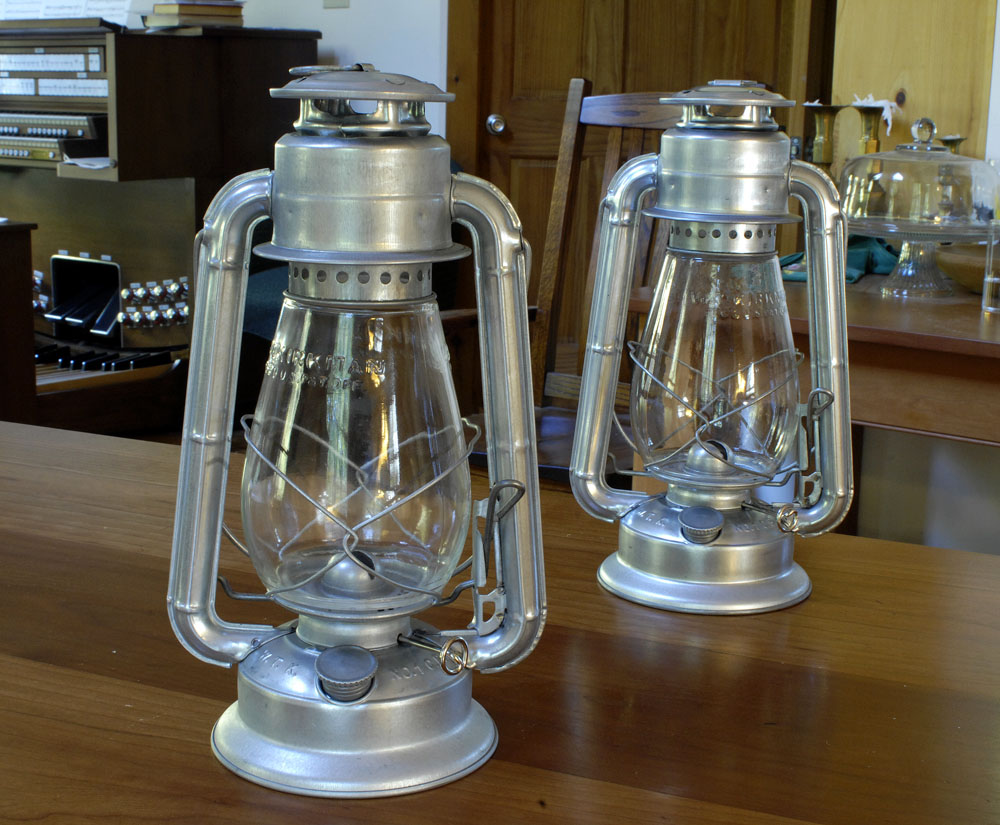
W.T. Kirkman No. 1 “Little Champ” oil lanterns
For many years, I have been weird about how the table is lit for supper. Electric light is not allowed. It’s not just an affectation for when there is company. It’s an everyday thing, even when I’m having supper alone. During the summer months, supper is over well before dark. But as the days get shorter, it was time to rethink table lighting yet again.
For years, my solution was ordinary tapers of the type that can be bought just about anywhere. But they’re too small. They don’t last long enough. And I don’t much like tapered candles. A year ago, I ordered a box of church candles. They’re very expensive, but they’re great candles. They’re 50 percent beeswax with a nice, straight, ecclesiastical shape. They’re 7/8 inch in diameter and 12 inches long. One box of 24 candles lasted all winter. But the price rose from $50 per box for the first box I ordered to $89 per box now. That’s just too much. All candles gutter and sometimes make a mess. Removing the drippings from the candleholders and replacing spent candles is an unpleasant chore.
My next idea was to try the little blown-glass oil candles made by Firefly. I thought about it for a long time before I ordered a pair, for safety reasons. Flammable liquid inside a glass vessel with a wick is the very definition of Molotov cocktail. What if one of them hit the floor and shattered? But eventually I ordered a pair and tried them out. I hated them. They produce a tiny little dot of light. I should have realized that before I bought them, because the wick is tiny. They are useless, except perhaps as votives, and I’m not a very votive person.
My next idea was an oil lamp, or chamber lamp, of the type that was very common in the days before electrification. They burn kerosene, and they’re easy to find today, both new and antique. But they, too, are usually made of glass. I made a new rule for myself: No glass oil lamps.
Then I admired the yacht lamps and miner’s lamps made of brass, often plated with stainless steel. But they are extremely expensive, and they’re often poorly reviewed as not being well-made enough to be worth the cost.
So then, the last option was oil lanterns.
Obviously there is still a thriving market for oil lanterns. Many people buy them, I believe, as backup lighting for power failures, which makes a lot of sense. They’re made of metal, and the larger lanterns have nice big wicks that are 1 inch wide. As I read reviews of lanterns on Amazon, I finally settled on lanterns made by W.T. Kirkman. Kirkman lanterns get the best reviews and were said to be better made. I ordered two of the Kirkman lanterns from Amazon. Here’s a link to the Kirkman web site. Kirkman sells several models and options in its lanterns, but not all of those models and options are available on Amazon.
I settled on the No. 1 “Little Champ” cold blast lantern. It’s 12 inches high with a 5/8-inch wick. So what does “cold blast” mean? It has to do with how the flame gets its air for combustion. It’s a clever bit of 19th Century technology. In a cold blast lantern, the air is taken in at the top of the lantern and travels down through the side tubes. This is said to give a whiter, brighter flame. Also, cold blast lanterns are said to self-extinguish if tipped over. I’m not going to try that out, but I’m glad to hear it.
The lanterns burn clean and aren’t affected by drafts or blasts of air. Once they’re lit and glowing, they look more domestic and less like something you’d see in a barn. They’re brighter than candles. And they give off a certain warmth (1,100 or 1,400 BTU per hour depending on the model) which should be very welcome in the wintertime.
Kirkman also makes a larger lantern, 15 inches tall with a 1-inch wick. I might just get myself one of those for outdoor use. All the lanterns are galvanized steel. Options include a black enamel finish, round shades that reflect the light downward, and globes in several colors of glass including red, yellow, green, blue, and frosted. Lantern technology is alive and well! You also can buy kits to electrify the lanterns, including with LED bulbs. But why would you want to do that?
When I was a young’un, my grandparents had an oil lantern that they had had since the days before rural electrification. I used to love to play with it. Though I suppose it’s a bit eccentric to have oil lanterns on the supper table, I’m pretty sure that will be my method hereafter. I’ll save the pricey church candles for special occasions.
My grandparents also always kept a 5-gallon tank of kerosene. These oil lanterns will, of course, burn kerosene. But these days most people use the newer lamp oils, which burn cleaner, make less odor, and are said to be safer.
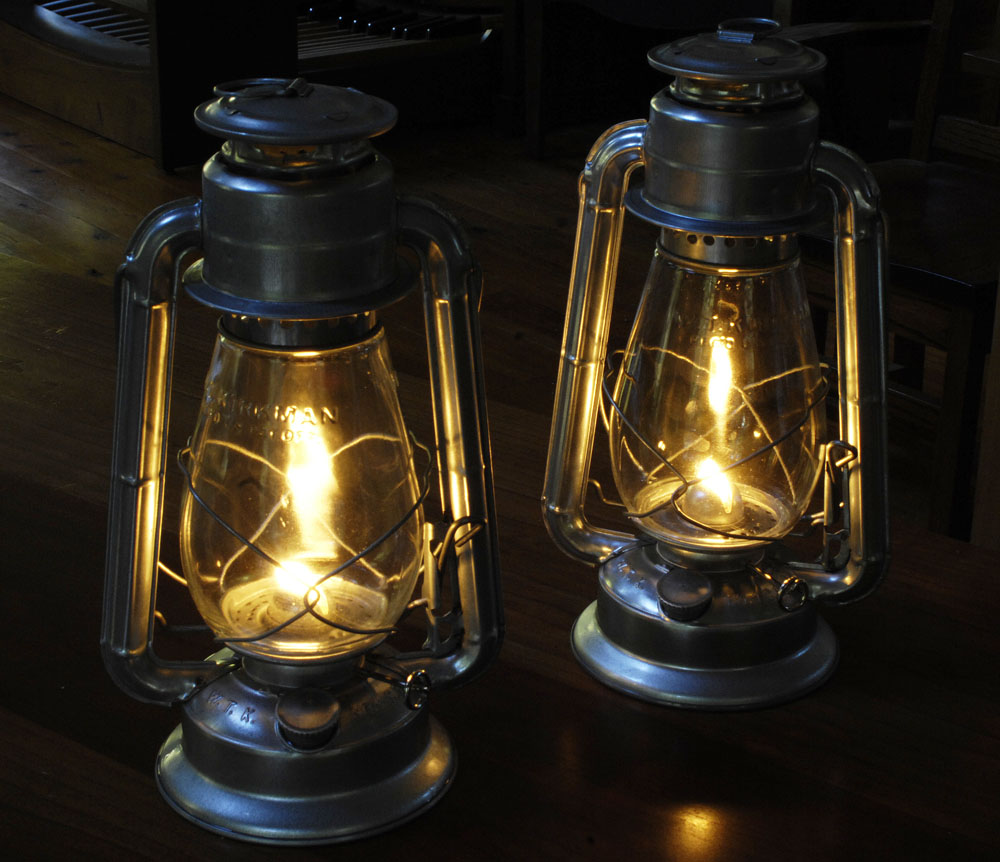
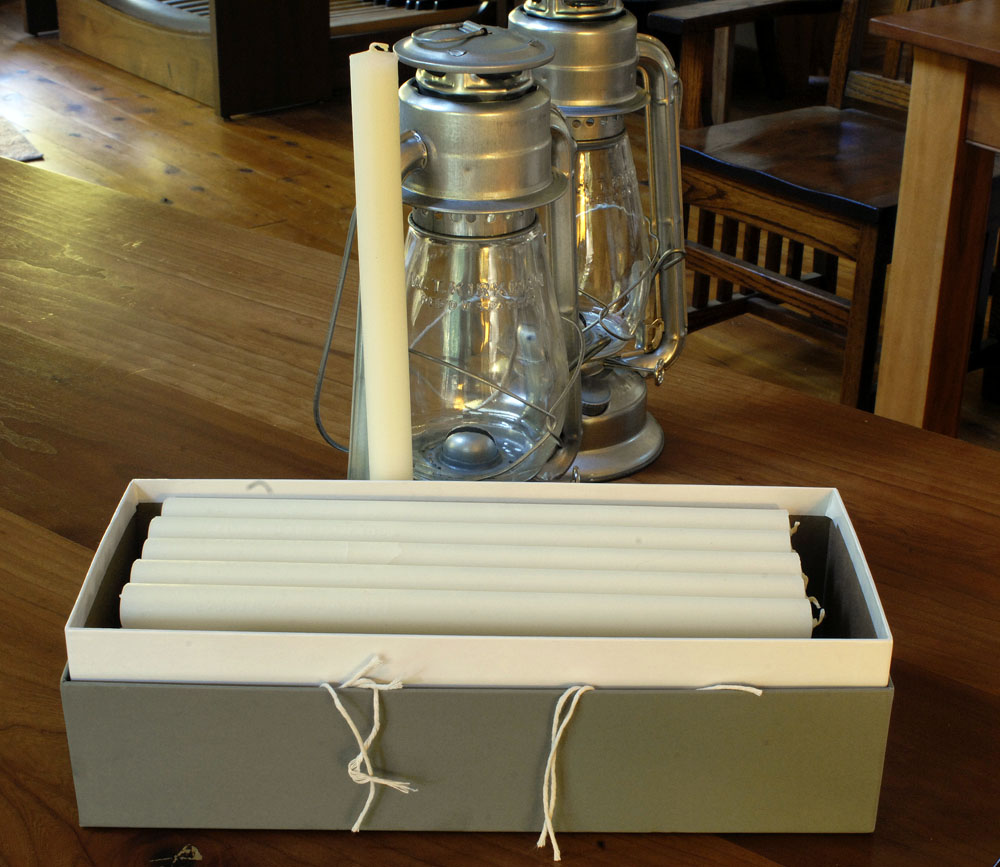
A box of church candles




